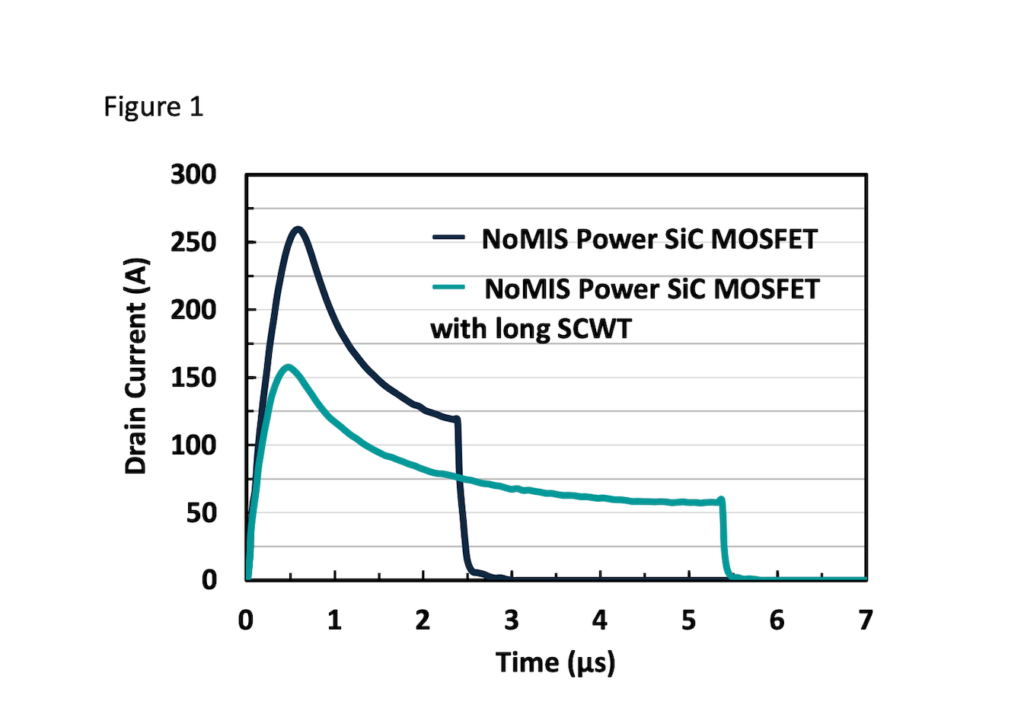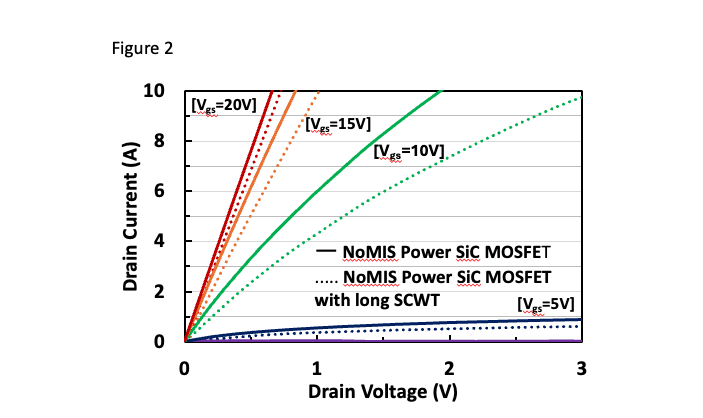-
LATEST NEWS / PRODUCT & TECHNOLOGY / SiC / WBG2 Min Read
Many industrial applications today are moving towards higher power levels with minimized power losses. One way to achieve this is to increase the DC link voltage. Infineon Technologies AG is addressing this market trend with the CoolSiC™ Schottky diode 2000 V G5 product family, the first discrete silicon carbide diodes with a breakdown voltage of 2000 V, introduced in September 2024.
The product portfolio has now been expanded to include a Schottky diode in the TO-247-2 package, which is pin-compatible with most existing TO-247-2 packages. The product family fits perfectly for applications with DC link voltages up to 1500 V DC, making it ideal for solar and EV chargers.
The CoolSiC Schottky diode 2000 V G5 in the TO-247-2 package is available with current ratings ranging from 10 to 80 A. It allows developers to achieve higher power levels in their applications while reducing the component count by half compared to 1200 V solutions. This simplifies the overall design and facilitates a seamless transition from multi-level to two-level topologies.
In addition, the Schottky diode in the TO-247-2 package incorporates .XT interconnection technology, which significantly reduces thermal resistance and impedance, thereby enhancing heat management. Humidity robustness has been validated through HV-H3TRB reliability testing. The diodes exhibit neither reverse recovery nor forward recovery, and feature a low forward voltage, ensuring improved system performance.
The 2000 V diode family is a perfect match for the CoolSiC MOSFETs 2000 V in the TO-247Plus-4 HCC package that Infineon launched in the spring of 2024. In addition to the TO-247-2 package, the CoolSiC Schottky Diode 2000 V is also available in the TO-247PLUS-4 HCC package.
Original – Infineon Technologies
-
LATEST NEWS / PRODUCT & TECHNOLOGY / SiC / WBG4 Min Read
NoMIS Power has announced a major breakthrough in improving the short-circuit withstand time (SCWT) of SiC MOSFETs. This innovation addresses one of the key challenges limiting the widespread adoption of SiC technology in high-power applications.
Silicon carbide (SiC) devices have gained prominence in power electronics due to their high efficiency, fast switching, and superior thermal performance. However, their historically lower short-circuit robustness compared to silicon-based IGBTs has posed challenges for their use in high-voltage and high-reliability environments, such as industrial drives, electric vehicles, and grid applications. NoMIS Power’s latest advancement significantly extends the SCWT of SiC MOSFETs to a minimum of 5 µs (Fig. 1), compared to the current industry standard of 2-3 µs, with no deleterious effect on specific on-resistance (Ron,sp) (Fig. 2). This enhancement greatly improves reliability and unlocks new opportunities for system designers seeking to maximize performance while maintaining fault tolerance.

Figure 1: Drain currents of the NoMIS Power SiC MOSFET and NoMIS Power SiC MOSFET with long SCWT under short-circuit conditions right before failure. Drain currents of the 1.2 kV, 80 mΩ SiC MOSFET (dark blue) and the long SCWT 1.2 kV, 80 mΩ SiC MOSFET (light blue) from NoMIS Power are compared. The measurement for short-circuit was conducted under the following conditions: Rg of 20 Ω, Vgs of 20 V, and a Vds of 800 V.
By tuning the trade-off between Ron,sp and SCWT using NoMIS Power’s proprietary SiC MOSFET fabrication design and process flow, the performance shown in Fig. 1 & Fig. 2 was achieved; and can be similarly managed depending on the specific application. Complete optimization of SiC MOSFETs with long SCWT using this approach will allow NoMIS Power to further extend the SCWT while maintaining negligible impact on Ron,sp.

Figure 2: Typical output characteristics of NoMIS Power 1.2 kV, 80 mQ SiC MOSFET and NoMIS Power 1.2 kV, 80 mQ SiC MOSFET with long SCWT showing no significant negative impact on on-resistance.
“At NoMIS Power, we have focused extensively on device architecture engineering, leading to a significant advancement in SiC short-circuit withstand time,” said Woongje Sung, CTO at NoMIS Power. “We believe this achievement provides valuable advantages to the power electronics community, helping engineers integrate SiC solutions with greater confidence in applications where robustness is critical.”
NoMIS Power’s long SCWT devices are well-screened for latent defects and offer easier gate driver desaturation (dSat) design for high di/dt and dv/dt, enabling faster switching frequencies of up to hundreds of kHz. Initial test results demonstrate a 2X to 4X increase in short-circuit withstand time compared to existing SiC devices, positioning NoMIS Power’s technology as a frontrunner in the next generation of power semiconductors. Additionally, when coupled with packaging innovations that impact junction-to-case thermal capacitance, alongside novel thermal management techniques with high heat transfer coefficients, the overall SCWT of the SiC MOSFET can be further improved.
The impact of this innovation extends across multiple industries, including renewable energy, electric transportation, and high-power industrial applications. A longer short-circuit withstand time ensures rugged and reliable performance in critical applications, reinforcing the robustness of SiC-based power systems. For example, built-in redundancy of the SiC MOSFETs inside power converters, which impacts costs as well as power density, can be reduced. Furthermore, applications sensitive to electromagnetic inference, that cannot solely rely on digital control and sensing schemes to detect and act upon short-circuit events, will now be able to effectively utilize SiC MOSFETs with lower risk. As SiC adoption accelerates, NoMIS Power’s breakthrough will play a pivotal role in enhancing the reliability and safety of SiC-based power converters and systems.
NoMIS Power is showcasing this breakthrough technology at APEC 2025, March 16-20, Atlanta, GA, Booth 548 along with its expanded range of SiC discretes and power modules.
Original – NoMIS Power
-
LATEST NEWS / SiC / WBG2 Min Read
SemiQ Inc will give the first official unveiling of the company’s new 1700 V and 1200 V Gen 3 SiC MOSFETs at the 2025 Applied Power Electronics Conference (APEC).
APEC takes place at the Georgia World Congress Center in Atlanta from March 16, with SemiQ’s booth located at stand #1348.
SemiQ’s 1200 V Gen3 SiC was announced in February, delivering an improved performance with a smaller die size and at a lower cost. The series includes automotive qualified (AEC-Q101) options and Known Good Die (KGD) testing has been implemented across the series with verification at voltages exceeding 1400 V, plus avalanche testing to 800 mJ. Reliability is further improved through 100% gate-oxide burn-in screening and UIL testing of discrete packaged devices.
The company’s new 1700 V MOSFET family of MOSFETS and modules with AEC-Q101 certification is designed to meet the needs of medium-voltage high power conversion applications, from photovoltaic, wind inverters and energy storage to EV and roadside charging as well as uninterruptable power supplies, and induction heating/welding. These switching planar D-MOSFETs enable more compact system designs with higher power densities and have been tested to KGD beyond 1900 V, with UIL avalanche testing to 600 mJ.
Dr. Timothy Han, President at SemiQ said: “There is so much innovation happening in power electronics right now and we’re delighted to have launched our next generation technologies in time to have them on display at APEC. The show brings together many of the leading minds within the industry and we’re looking forward to discussing the challenges faced and how we can help them.”
Original – SemiQ
-
LATEST NEWS / PRODUCT & TECHNOLOGY / SiC / WBG2 Min Read
SemiQ Inc has announced a family of three 1200V SiC full-bridge modules, each integrating two of the company’s rugged high-speed switching SiC MOSFETs with reliable body diode. The modules have been developed to simplify the development of photovoltaic inverters, energy storage, battery charging and other high-frequency DC applications.
Available in 18, 38 and 77mΩ (RDSon) variants, the modules have been tested at voltages exceeding 1350V and deliver a continuous drain current of up to 102A, a pulsed drain current of up to 250A and a power dissipation of up to 333W.
Operational with a junction temperature of up to 175oC, the rugged B2 modules have exceptionally low switching losses (EON 0.13mJ, EOFF 0.04mJ at 25oC – 77mΩ module), low zero-gate voltage drain/gate source leakage (0.1µA/1nA – all modules) and low junction to case thermal resistance (0.4oC per watt – 18mΩ module).
“By integrating high-speed SiC MOSFETs with exceptional performance and reliability, our new QSiC 1200V family of full-bridge modules sets a new standard for power density and efficiency in demanding DC applications. This family of modules simplifies system design, and enables faster time-to-market for next-generation solar, storage, and charging solutions,” said Seok Joo Jang, Director of Module Engineering at SemiQ.
Available immediately, the modules can be mounted directly to a heat sink, are housed in a 62.8 x 33.8 x 15.0mm package (including mounting plates) with press fit terminal connections and split DC negative terminals.
Original – SemiQ
-
LATEST NEWS / PRODUCT & TECHNOLOGY / SiC / WBG3 Min Read
TekSiC introduced the Xforge™ PVT, a groundbreaking high-temperature Induction Heating Furnace crafted to meet the rigorous demands of semiconductor industries and research institutes. With its state-of-the-art design and exceptional performance, the Xforge™ PVT revolutionizes PVT process development and operation. It offers versatile configurations, ensuring peak performance across diverse specialized applications.
Xforge™ PVT is a member of TekSiC’s Xforge™ platform. The journey to creating the Xforge™ began with a bold vision: to design a furnace that delivers exceptional heating capabilities while maintaining flexibility for a variety of high-temperature applications. TekSiC’s engineers faced the challenge of balancing size, power, and modularity. Through extensive research and testing, they developed a compact, highly efficient furnace that ensures consistent and precise heating for a diverse range of materials and processes.
“The Xforge™ PVT is a pivotal advancement in our company’s journey,” says Joachim Tollstoy, CEO of TekSiC. “It reflects our commitment to innovation and is designed to adapt to the specialized needs of semiconductor industries and research institutes. We built it to deliver exceptional performance with a modular design that allows for tailored solutions to meet each customer’s requirements. We are excited to use the Xforge™ PVT daily in our own SiC growth program!”
Key Features of the Xforge™
- Compact, Modular Design: The Xforge™ PVT is designed with a compact, modular architecture that allows for easy customization, enabling users to adjust the furnace’s features to suit their specific PVT application. This flexibility guarantees optimal performance and efficiency, eliminating the need for bulky, one-size-fits-all solutions.
The small footprint and excellent stack ability of the Xforge™ PVT significantly pushes the number of furnaces that can fit into your production facility. - Versatile Usage: Perfectly suited for both industrial and research applications, Xforge™ PVT, is designed for customers engaged in developing growth processes for SiC crystal with up to 200 mm in diameter. It is fully prepared for integration into large-scale SiC production.
- Advanced Process Control: The induction-heated Xforge™ PVT system is equipped with high-quality components to provide precise temperature and pressure control, ensuring outstanding stability during the SiC crystal growth process. With advanced data sensing capabilities, it supports machine learning applications through the latest communication protocols.
- Quality Tested and Field Proven: The Xforge™ PVT has undergone extensive industrial reliability testing at customer sites over several years, proving its durability in extreme high-temperature applications. It is CE-marked, ensuring compliance with strict EU health, safety, and environmental regulations.
- Built in Sweden with Precision Craftsmanship: Designed and manufactured in Linköping, Sweden—a global center for semiconductor research and silicon carbide crystal growth—the Xforge™ PVT leverages TekSiC’s decades of expertise in material science and system engineering. Each unit is crafted with meticulous care, ensuring exceptional quality and reliability.
Original – TekSiC
- Compact, Modular Design: The Xforge™ PVT is designed with a compact, modular architecture that allows for easy customization, enabling users to adjust the furnace’s features to suit their specific PVT application. This flexibility guarantees optimal performance and efficiency, eliminating the need for bulky, one-size-fits-all solutions.